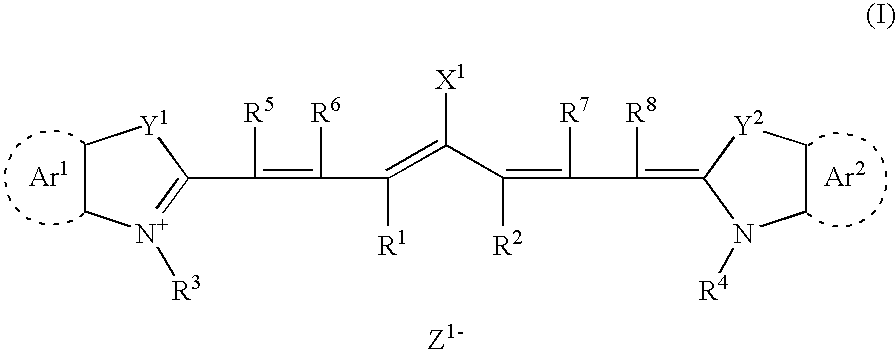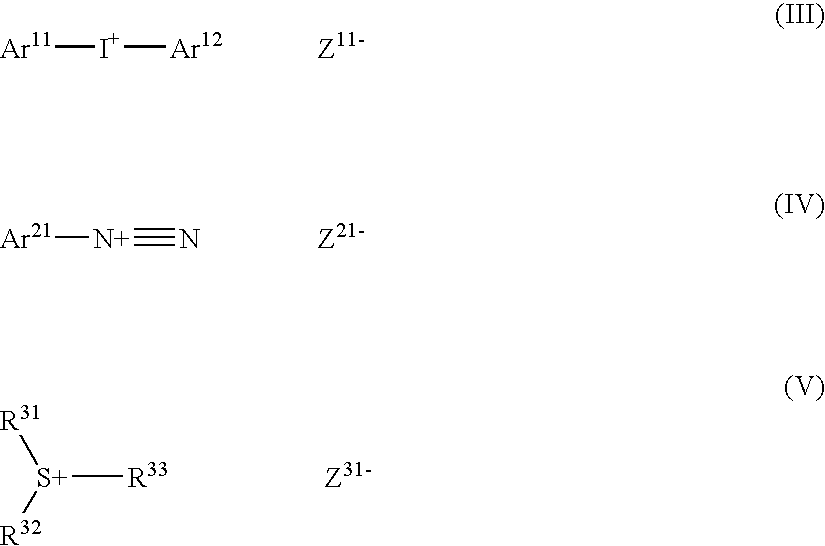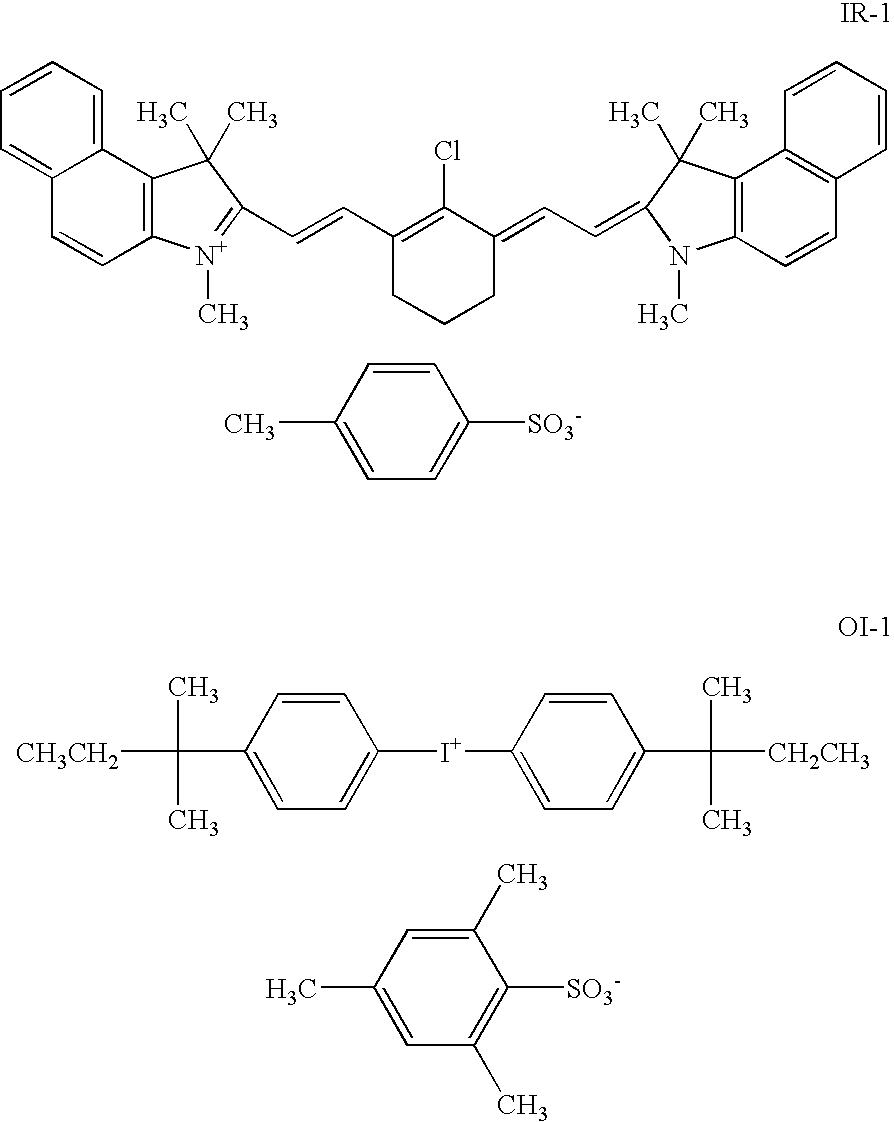Lithographic printing plate precursor
a technology precursor, applied in the field of lithographic printing plate precursor, can solve problems such as inferior print-out properties
- Summary
- Abstract
- Description
- Claims
- Application Information
AI Technical Summary
Benefits of technology
Problems solved by technology
Method used
Image
Examples
example 1
[Preparation of a Support]
Molten metal of JIS A1050 containing not less than 99.5% of aluminum, 0.30% of Fe, 0.10% of Si, 0.02% of Ti and 0.013% of Cu was subjected to a cleaning treatment and casting. In the cleaning treatment, degassing was conducted for removing unnecessary gases such as hydrogen in the molten metal, followed by ceramic tube filtering. The casting was conducted according to DC casting method. The resultant solidified ingot plate of 500 mm in thickness was scalped in a depth of 10 mm from the surface and was subjected to a unifying treatment at 550° C. for 10 hours in order to avoid coarsening of a intermetallic compound. Then, the ingot was hot-pressed at 400° C., annealed at 500° C. for 60 seconds in a continuously annealing furnace, then cold-pressed to form a pressed aluminum web of 0.30 mm in thickness. The center line average surface roughness, Ra, of the cold-pressed aluminum web was adjusted to 0.2 μm by controlling the coarseness of rolling rolls. Subsequ...
example 2
A lithographic printing plate precursor [P-2] was obtained in the same manner as in Example 1 except for adding 0.15 g of 3,3-bis(p-dimethylaminophenyl)-6-dimethylaminophthalide in place of 3-diethylamino-6-methyl-7-anilinofluoran. Further, laser exposure was conducted in the same manner as in Example 1. Difference in density between non-exposed areas and exposed areas was measured to be 0.12, which demonstrates good print-out properties.
Further, development and evaluation of printing were conducted in the same manner as in Example 1. Thus, there were demonstrated good suitability for plate inspection after development as in Example 1, and good printed matters were obtained with no troubles.
PUM
| Property | Measurement | Unit |
|---|---|---|
| Percent by mass | aaaaa | aaaaa |
| Nanoscale particle size | aaaaa | aaaaa |
| Percent by mass | aaaaa | aaaaa |
Abstract
Description
Claims
Application Information
 Login to View More
Login to View More - R&D
- Intellectual Property
- Life Sciences
- Materials
- Tech Scout
- Unparalleled Data Quality
- Higher Quality Content
- 60% Fewer Hallucinations
Browse by: Latest US Patents, China's latest patents, Technical Efficacy Thesaurus, Application Domain, Technology Topic, Popular Technical Reports.
© 2025 PatSnap. All rights reserved.Legal|Privacy policy|Modern Slavery Act Transparency Statement|Sitemap|About US| Contact US: help@patsnap.com



